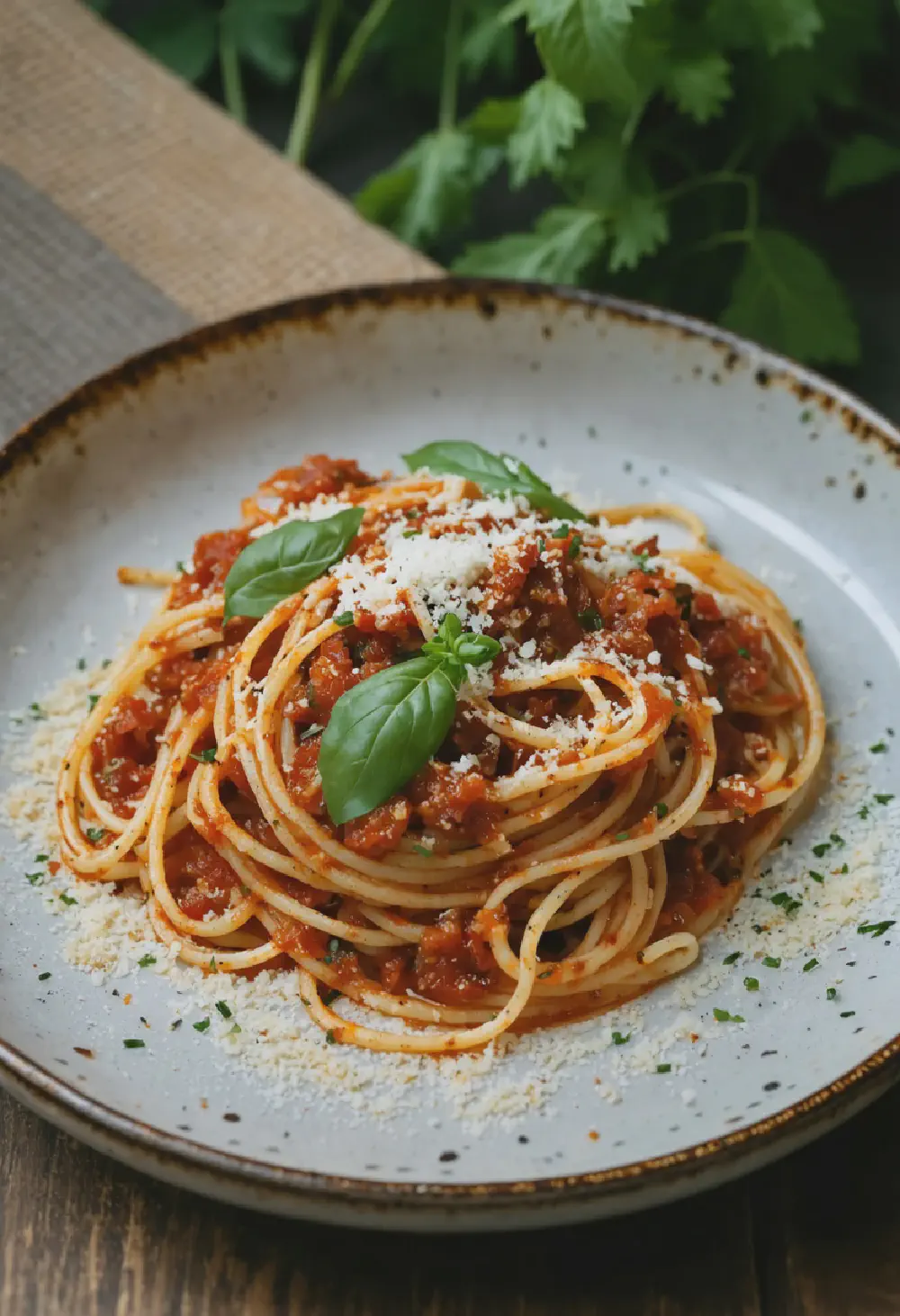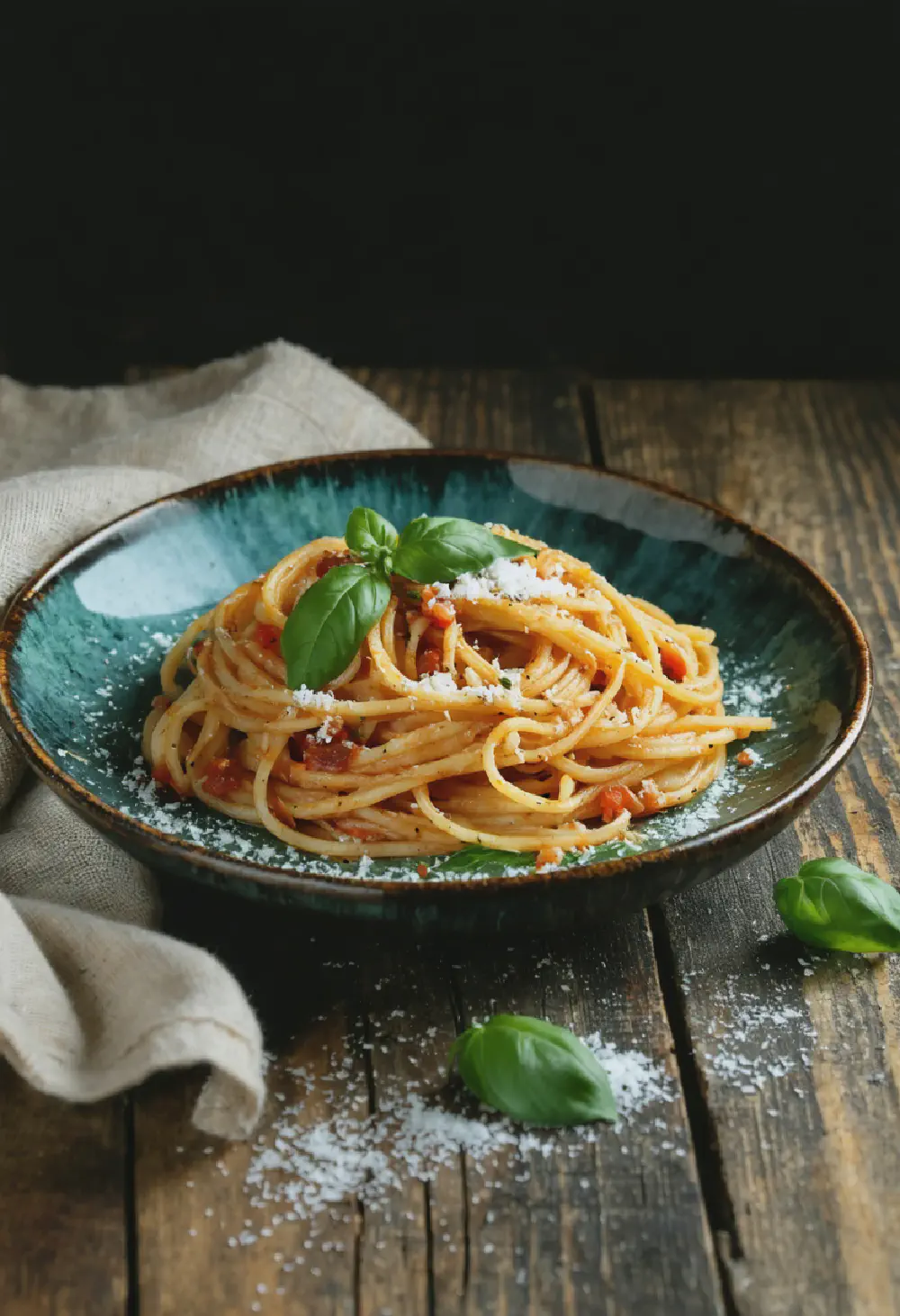Authentic Italian Minestrone
20M
1H and 5M
- Makes 6
- 2 tablespoons olive oil
- 1 large onion, diced
- 2 cloves garlic, minced
- 2 carrots, peeled and diced
- 2 stalks celery, diced
- 1 zucchini, diced
- 1 cup green beans, trimmed and cut into 1-inch pieces
- 1 teaspoon dried oregano
- 1 teaspoon dried basil
- 1/2 teaspoon dried thyme
- 1 bay leaf
- 1 can (14.5 oz) diced tomatoes, with juices
- 6 cups vegetable broth
- 1 can (15 oz) cannellini beans, drained and rinsed
- 1 cup small pasta (such as ditalini or small shells)
- 2 cups chopped kale or spinach
- Salt and pepper to taste
- Grated Parmesan cheese for serving (optional)
- Fresh basil or parsley for garnish (optional)
- Heat the olive oil in a large pot over medium heat. Add the onion and garlic, and sauté until the onion is translucent, about 5 minutes.
- Add the carrots, celery, zucchini, and green beans to the pot. Cook, stirring occasionally, for another 5 minutes.
- Stir in the oregano, basil, thyme, and bay leaf. Pour in the diced tomatoes and vegetable broth, and bring the mixture to a boil.
- Reduce the heat to low and simmer for about 20 minutes, or until the vegetables are tender.
- Add the cannellini beans and pasta to the pot. Continue to simmer until the pasta is cooked, about 10 minutes.
- Stir in the kale or spinach and cook until wilted, about 2 minutes. Season with salt and pepper to taste.
- Remove the bay leaf before serving. Ladle the minestrone into bowls and top with grated Parmesan cheese and fresh herbs if desired.
Authentic Italian Minestrone: A Hearty Italian Classic
History
The origins of Authentic Italian Minestrone can be traced back to ancient Rome, where it was a staple dish among the peasantry. The word “minestrone” comes from the Italian word “minestrare,” which means “to serve.” Initially, minestrone was a simple soup made from whatever vegetables and legumes were available, reflecting the resourcefulness of Italian cooks. Over centuries, as trade routes expanded and new ingredients became accessible, the recipe evolved, incorporating pasta and a variety of vegetables. Today, this traditional Italian minestrone soup remains a beloved dish, celebrated for its versatility and comforting warmth.
Taste Profile
Authentic Italian Minestrone offers a rich and complex taste profile that is both hearty and comforting. The soup is characterized by its savory broth, which is often enhanced with a soffritto base of onions, carrots, and celery. The addition of various vegetables like tomatoes, zucchini, and beans adds layers of flavor and texture. The inclusion of pasta provides a satisfying bite, while herbs such as basil and oregano infuse the soup with a distinctly Italian aroma. The overall taste is a harmonious blend of earthy, slightly sweet, and herbaceous notes, making it a perfect dish for a wholesome family meal.
Cultural Significance
In Italian cuisine, Authentic Italian Minestrone holds a special place as a symbol of frugality and communal dining. It embodies the Italian principle of “cucina povera,” or “poor kitchen,” which emphasizes using simple, affordable ingredients to create nourishing meals. Minestrone is often served at family gatherings and community events, reflecting the importance of sharing food and fostering connections. Its adaptability to seasonal ingredients also highlights the respect for nature’s bounty within Italian culinary traditions. As a dish that can be enjoyed year-round, minestrone continues to be a cherished part of Italy’s rich gastronomic heritage.





















